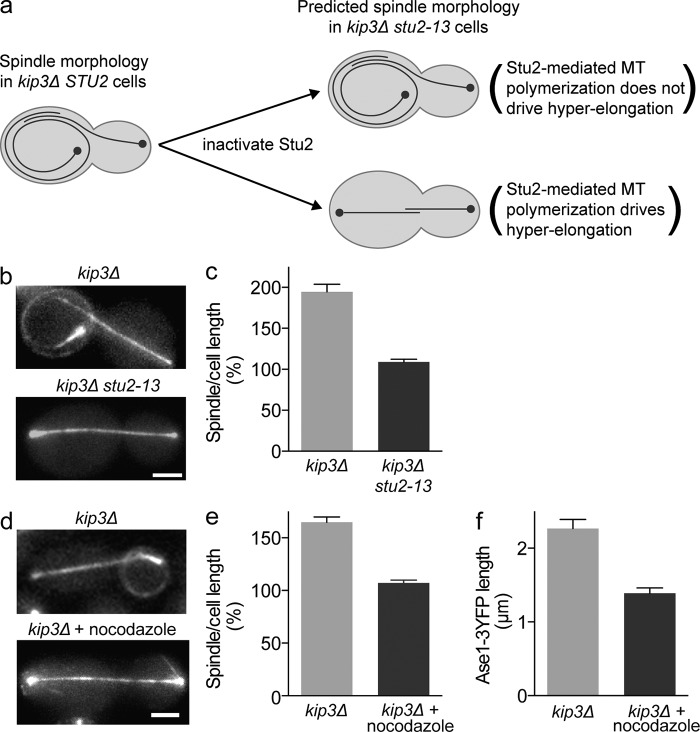Figure 5.
Suppressing microtubule polymerization reduces midzone length and rescues spindle hyper-elongation in the absence of Kip3. (a) Predicted effects of Stu2 inactivation on spindle hyper-elongation. MT, microtubule. (b) Representative spindle morphology in cdc15-2 kip3Δ cells with functional STU2 (top) or inactivated stu2-13 (bottom) during anaphase arrest. (c) Spindle length as a percentage of cell length in anaphase-arrested kip3Δ cells in the presence or absence of active Stu2 (cdc15-2 kip2Δ kip3Δ, 2.5 h at 37°C). (d) Representative GFP-tubulin fluorescence images of kip3Δ cells arrested in anaphase for 1 h, followed by an additional 1.5 h in the absence (top) or presence (bottom) of nocodazole to inhibit microtubule polymerization. (e) Spindle length as a percentage of cell length for cells treated in panel d. (f) Length of Ase1-3YFP region after 2 h anaphase arrest in the presence or absence of nocodazole. Average ± SE: (c) n = 42–45 cells from three experiments; (e) n = 98 cells for each treatment from three experiments; (f) n = 78 and 77 cells for the absence or presence of nocodazole, respectively, from three experiments. P < 0.005 (c, e, and f). Bar, 2 µm.

